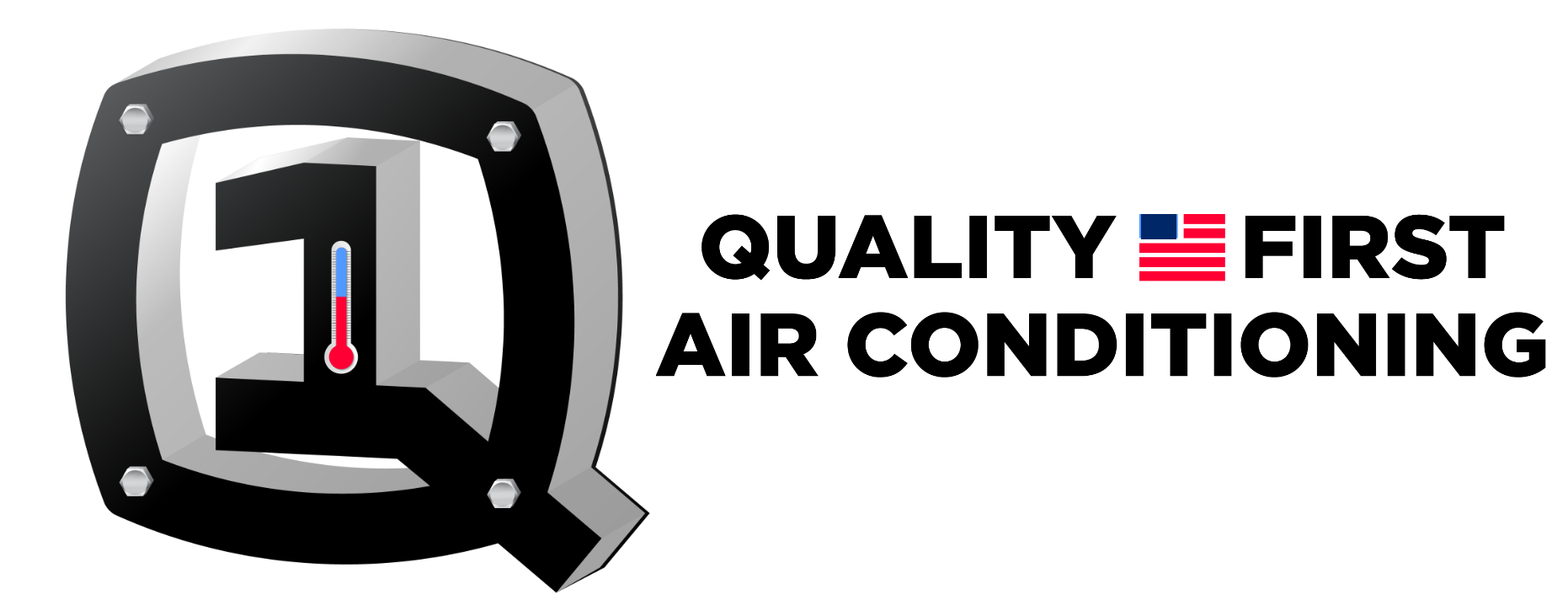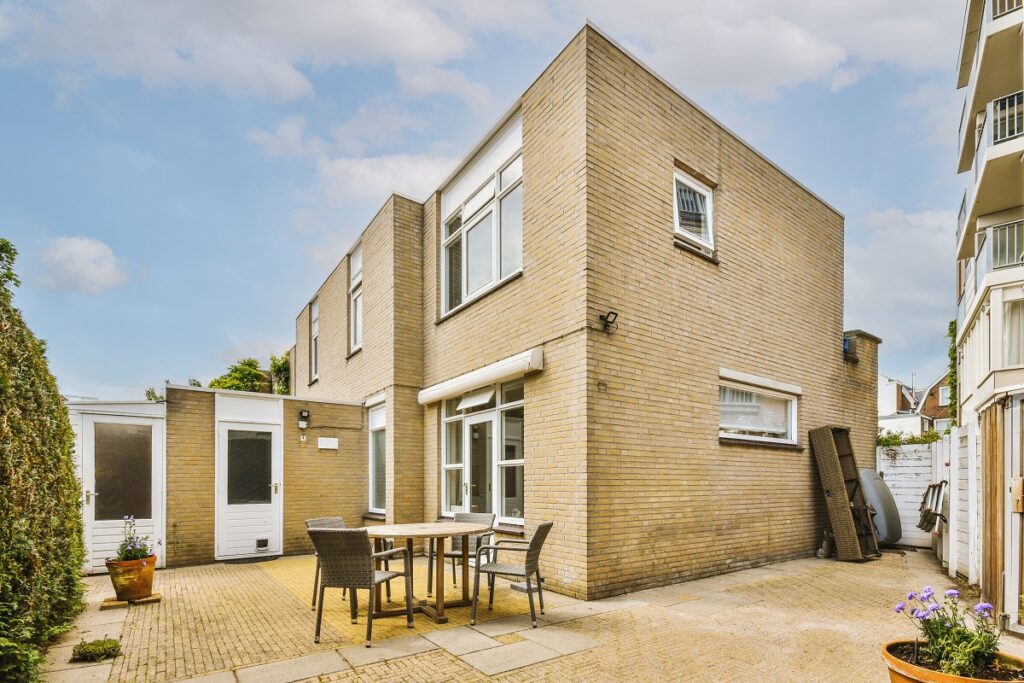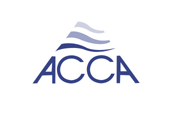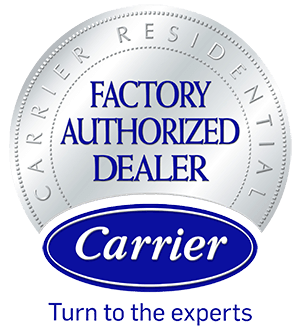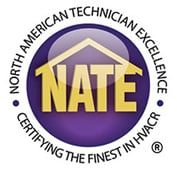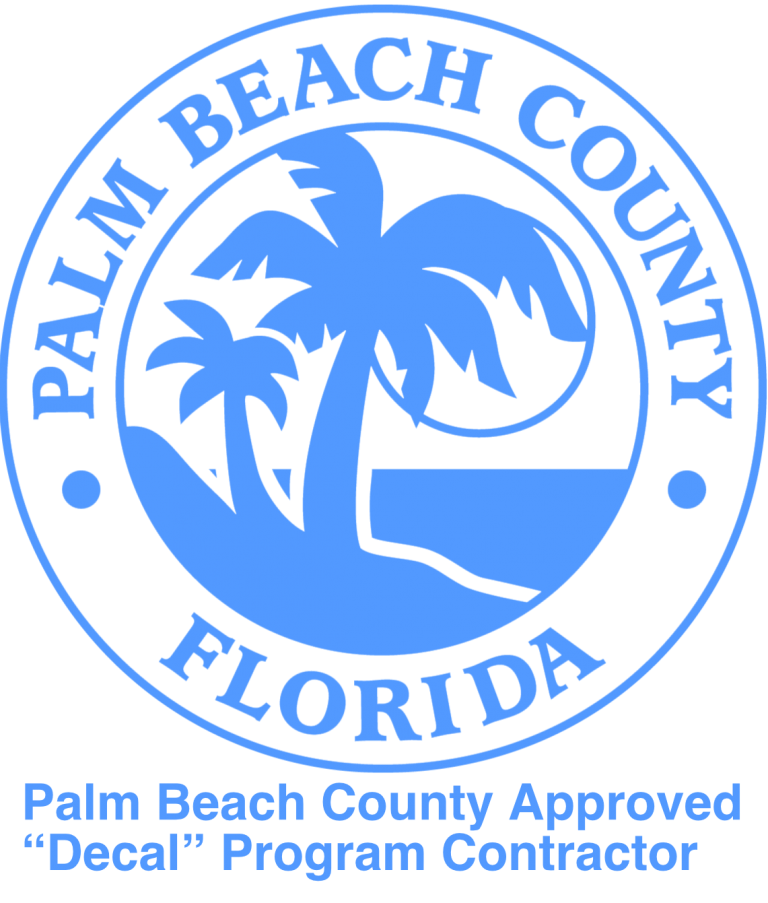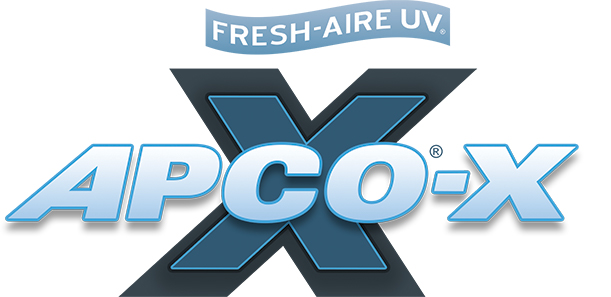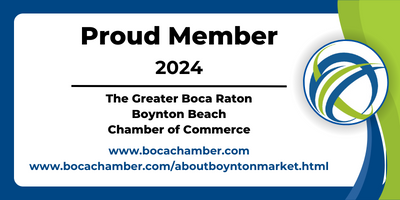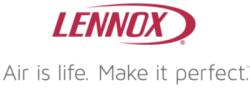Commercial air conditioning is essential for keeping businesses comfortable and productive. It helps regulate temperature, improves air quality, and enhances employee satisfaction. Choosing the right system can save energy costs and boost efficiency. With various options available, understanding what works best for your space, including an efficient HVAC system and HVAC maintenance, is crucial.
This listicle will break down the top commercial air conditioning systems on the market today. We’ll cover features, benefits, and what sets them apart from the competition. Whether you’re upgrading or installing new units, you’ll find valuable insights here. Scroll down for reviews of our top picks and discover the perfect solution for your business needs.
Key Takeaways

-
Invest in programmable thermostats to automatically adjust temperatures based on occupancy, saving energy and costs.
-
Schedule regular maintenance for your air conditioning system to ensure it operates efficiently and lasts longer.
-
Use energy-efficient filters to improve air quality and reduce energy consumption in your commercial space.
-
Implement zone cooling strategies to control temperatures in different areas, enhancing comfort and efficiency.
-
Upgrade insulation to minimize energy loss, making your air conditioning system more effective and reducing utility bills.
-
Optimize airflow by checking ducts and vents, which can lead to improved cooling performance and energy savings.
1. Programmable Thermostats
Programmable thermostats offer significant advantages for commercial air conditioning systems. These devices allow businesses to set schedules for temperature adjustments. By aligning these settings with business hours, companies can reduce unnecessary energy use and lower their utility bills.
Remote access is another unique feature of programmable thermostats. This capability enhances convenience and efficiency. Managers can adjust the thermostat settings from anywhere, ensuring optimal heating or cooling even when the office is empty.
Energy consumption data is a valuable tool provided by many modern thermostats. This data helps businesses monitor usage patterns. By analyzing this information, companies can identify peak usage times and adjust their settings accordingly. For instance, if a business notices high energy consumption during off-peak hours, it can modify its schedule to save more.
The potential savings are impressive. According to the U.S. Department of Energy, using a programmable thermostat can save up to 10% on heating and cooling bills annually. This statistic underscores the importance of investing in a good thermostat.
In summary, programmable thermostats enhance the efficiency of commercial air conditioning systems through scheduling, remote access, and monitoring capabilities. Businesses that adopt these technologies can expect reduced energy costs and improved comfort levels for employees and customers alike.
2. Regular Maintenance
Regular maintenance is essential for any commercial air conditioning system. Schedule routine inspections to ensure that all components, such as pumps and motors, are functioning properly. A well-maintained HVAC system can operate efficiently, reducing overall energy costs.
Replace worn-out parts promptly. Ignoring minor issues can lead to larger problems down the line. For example, a small leak in the refrigerant line can escalate into a major breakdown if not addressed quickly. This can result in significant downtime for your business and increased repair costs.
Keeping detailed records of maintenance activities aids in tracking performance. These records help anticipate future needs and identify patterns that may indicate underlying issues. For instance, if a specific part requires frequent repairs, it may be time for an upgrade.
Consider environmental factors as well. Windows, doors, and curtains play a role in maintaining optimal indoor temperatures. Proper insulation reduces the load on your HVAC system, enhancing its performance.
Hiring a qualified technician is crucial. They possess the expertise needed to perform thorough inspections and recommend necessary adjustments or replacements. Investing in regular HVAC maintenance not only ensures comfort but also prolongs the lifespan of your equipment.
In summary, regular maintenance of commercial air conditioning systems is vital for efficiency and cost-effectiveness. By staying proactive with inspections and repairs, businesses can save money while ensuring a comfortable environment for employees and customers alike.
3. Energy-Efficient Filters
Energy-efficient filters play a crucial role in reducing energy consumption in commercial air conditioning systems. These high-efficiency filters capture more dust and allergens, which not only improves indoor air quality but also enhances system performance.
Regularly changing these filters is essential. Clogged filters can strain the AC system, leading to increased energy costs. A dirty filter can decrease efficiency by up to 15%, resulting in significant energy savings over time.
Educating staff about filter maintenance is vital for maintaining consistent air quality and efficiency. When employees understand the importance of clean filters, they are more likely to adhere to a regular maintenance schedule. This proactive approach contributes to a better working environment and can lead to considerable energy savings.
The Seasonal Energy Efficiency Ratio (SEER) is another important factor to consider. Higher SEER ratings indicate better efficiency, meaning that systems equipped with energy-efficient filters can operate at lower energy levels while still providing optimal cooling.
Incorporating retail energy management strategies can further enhance these benefits. For example, implementing power surge regulators protects equipment from damage while optimizing performance during peak usage times.
4. Zone Cooling
Zone cooling offers a unique approach to managing area temperatures in commercial spaces. This system divides a building into different zones, allowing for tailored temperature control based on usage and occupancy.
Implementing zoning systems enables businesses to adjust cooling levels in less-used areas. For instance, if a conference room is only occupied during meetings, the cooling can be reduced when it’s empty. This strategy not only enhances comfort in high-traffic areas but also saves energy, leading to significant cost reductions.
Smart sensors play a crucial role in zone cooling. These devices automatically adjust cooling based on real-time occupancy data. When employees enter a workspace, the sensors detect movement and increase the cooling level accordingly. Conversely, when the space is unoccupied, the system reduces cooling to save energy.
Statistics show that businesses can reduce their energy costs by up to 30% by utilizing zone cooling systems. This efficiency translates to lower utility bills and a smaller carbon footprint.
In summary, zone cooling provides an effective solution for optimizing temperature control in commercial air conditioning. It focuses on enhancing comfort while promoting energy savings through intelligent management of different spaces within a building.
5. Insulation Upgrades
Insulation upgrades play a crucial role in improving energy efficiency in commercial air conditioning systems. Evaluating existing insulation identifies areas needing improvement. This process helps prevent cool air loss, which is essential for maintaining a comfortable internal climate.
Investing in high-quality insulation materials can significantly reduce cooling costs. For example, using advanced heat insulators minimizes the amount of energy required to keep buildings cool. Buildings with effective insulation can experience up to 30% savings on energy bills compared to those with poor insulation.
Sealing gaps and cracks in walls, ceilings, and floors is another vital step. Applying sealants ensures that cool air does not escape, creating a more controlled environment. This adjustment not only enhances comfort but also reduces electrical consumption by minimizing the workload on HVAC systems.
Consider installing glass doors with better insulating properties. These upgrades provide natural light while preventing heat transfer, further enhancing energy efficiency.
The benefits are clear: improved insulation leads to lower power surges during peak cooling times and extends the lifespan of HVAC equipment. By making these adjustments, businesses can achieve significant operational savings while promoting sustainability.
6. Airflow Optimization
Airflow optimization plays a critical role in commercial air conditioning systems. Assessing airflow patterns ensures even distribution of cool air throughout a space. This prevents hot spots and enhances comfort for occupants.
Obstructions around vents and ducts can significantly reduce system efficiency. Regularly check these areas to remove any items blocking airflow. For example, furniture or equipment placed too close to vents can hinder air circulation. By keeping these areas clear, the system operates more effectively.
Strategically using fans can also enhance airflow. Ceiling fans or portable fans help circulate air, making spaces feel cooler without lowering thermostat settings. This not only improves comfort but can also lead to energy savings.
Proper maintenance of air filters is essential for optimal airflow. A clean air filter allows for better air passage, reducing strain on the system. According to the U.S. Department of Energy, changing filters regularly can improve HVAC efficiency by up to 15%.
In summary, optimizing airflow involves assessing patterns, removing obstructions, and using fans wisely. These actions collectively enhance the performance of commercial air conditioning systems while promoting a comfortable environment for all users.
7. Smart HVAC Controls
Smart HVAC controls enhance efficiency in HVAC systems by allowing real-time monitoring and adjustments based on external conditions. These advanced systems utilize sensors to detect temperature changes, humidity levels, and occupancy patterns.
Users can access their HVAC settings remotely through smartphone apps. This feature enables homeowners to adjust temperatures or switch off units when away, leading to significant energy savings. A study from the U.S. Department of Energy found that programmable thermostats can save users up to 10% on heating and cooling costs annually.
Analytics from smart systems provide insights into energy usage. This data helps users make informed decisions about their efficient HVAC unit operations. For example, if a specific area of a home consistently requires more cooling, adjustments can be made to improve comfort without wasting energy.
Automation is another key feature of smart HVAC controls. These systems can adapt settings based on seasonal changes, ensuring optimal performance year-round. During winter months, for instance, the system can automatically adjust to maintain comfortable indoor temperatures without excessive energy consumption.
Integrating smart controls into a residential HVAC system leads to an efficient home setup. Investing in these technologies not only enhances comfort but also supports sustainability efforts by reducing overall energy use.
8. Solar Panels Integration
ar panels integration offers a sustainable solution for commercial air conditioning systems. This approach significantly offsets energy costs, making it an attractive option for businesses.
Businesses can save up to 30% to 50% on their energy bills by installing solar panels. A typical commercial system can generate between 10 kW to 100 kW of power, depending on the size and energy needs. For example, a medium-sized business might invest around $15,000 to $40,000 in a solar installation but could see a return on investment within five to seven years.
Calculating potential savings involves analyzing current energy usage and local solar incentives. Many states offer tax credits and rebates that can further reduce installation costs. Using online calculators or consulting with solar providers helps determine feasibility.
Battery storage options enhance the benefits of solar integration. Businesses can store excess energy generated during the day for use during peak demand times. This not only reduces reliance on the grid but also provides backup power during outages. Systems like Tesla Powerwall can store significant amounts of energy, ensuring consistent AC operation even when sunlight is low.
Incorporating solar panels into commercial air conditioning setups represents a forward-thinking strategy. It combines cost savings with environmental responsibility, aligning with modern sustainability goals.
9. Night Setback Temperatures
Night setback temperatures refer to programming thermostats to raise temperatures during non-business hours. This strategy helps businesses save energy and reduce costs.
Energy savings can be significant. Studies show that adjusting the thermostat by just a few degrees can lead to a reduction in energy bills by up to 10%. For example, if a company spends $1,000 monthly on air conditioning, implementing night setback temperatures could save around $100 each month.
Assessing the impact of these changes is crucial. Higher temperatures at night can affect employee comfort when they return in the morning. Conducting surveys or discussions with staff can help gauge their comfort levels. Adjustments may be necessary based on feedback.
Communication plays a key role in this process. Informing staff about the new temperature settings ensures compliance and understanding. Clear guidelines on how these changes benefit both the environment and the company’s bottom line can foster a cooperative atmosphere.
Incorporating smart thermostats can automate these adjustments, making it easier for businesses to implement night setback temperatures without manual intervention. This technology often includes features that allow for remote monitoring and adjustments, providing greater control over energy usage.
10. Heat Recovery Systems
Heat recovery systems capture waste heat from air conditioning systems. These systems reuse the heat for heating applications, significantly enhancing energy efficiency.
Heat recovery systems work by redirecting heat generated during cooling processes. This reduces the need for additional heating sources, leading to lower operational costs. For example, a study showed that using heat recovery can save up to 30% on energy bills in commercial settings.
Key components include compressors and HVAC refrigeration equipment. These units help transfer and manage the captured heat effectively. They can be integrated into existing HVAC systems with relative ease.
Performance metrics are crucial for evaluating these systems. Monitoring includes tracking energy consumption and savings over time. This data helps businesses understand the system’s effectiveness in reducing operational costs.
Benefits of heat recovery systems include:
-
Reduced energy costs: Lower reliance on separate heating methods.
-
Improved sustainability: Less waste heat contributes to greener operations.
-
Enhanced comfort: Provides consistent heating without additional energy input.
Implementing heat recovery systems aligns with modern energy standards. Businesses looking to improve their HVAC system energy efficiency should consider these options.
Final Remarks
Implementing these strategies can greatly enhance your commercial air conditioning system. From programmable thermostats to solar panel integration, each step contributes to improved efficiency and comfort. Regular maintenance and smart HVAC controls keep your system running smoothly.
Take action now! Evaluate your current setup and explore these options. Investing in your air conditioning not only boosts performance but also saves money in the long run. Don’t wait—optimize your cooling system today for a cooler, more efficient tomorrow.
Frequently Asked Questions
What are programmable thermostats in commercial air conditioning?
Programmable thermostats allow businesses to set specific temperatures for different times of the day. This feature enhances energy efficiency and reduces costs by optimizing HVAC usage based on occupancy.
How important is regular maintenance for commercial air conditioning systems?
Regular maintenance is crucial for ensuring optimal performance and longevity of your system. It helps prevent breakdowns, improves energy efficiency, and can significantly lower repair costs over time.
What are energy-efficient filters?
Energy-efficient filters trap more dust and allergens while allowing better airflow. Using these filters can enhance indoor air quality and improve the efficiency of your HVAC system, leading to lower energy bills.
What is zone cooling?
Zone cooling allows different areas of a building to be cooled independently. This targeted approach increases comfort and energy savings by only cooling occupied spaces rather than the entire building.
How do insulation upgrades benefit commercial air conditioning?
Upgrading insulation reduces heat transfer, keeping buildings cooler during summer. Improved insulation lowers energy consumption, enhancing overall HVAC efficiency and comfort levels within the space.
What is airflow optimization?
Airflow optimization involves adjusting ductwork and vents to ensure even distribution of conditioned air. This process improves comfort, reduces energy waste, and enhances the overall efficiency of the HVAC system.
How do smart HVAC controls work?
Smart HVAC controls use technology to monitor and adjust temperature settings automatically. These systems enhance energy efficiency, provide remote access, and enable data tracking for better management of heating and cooling needs.
